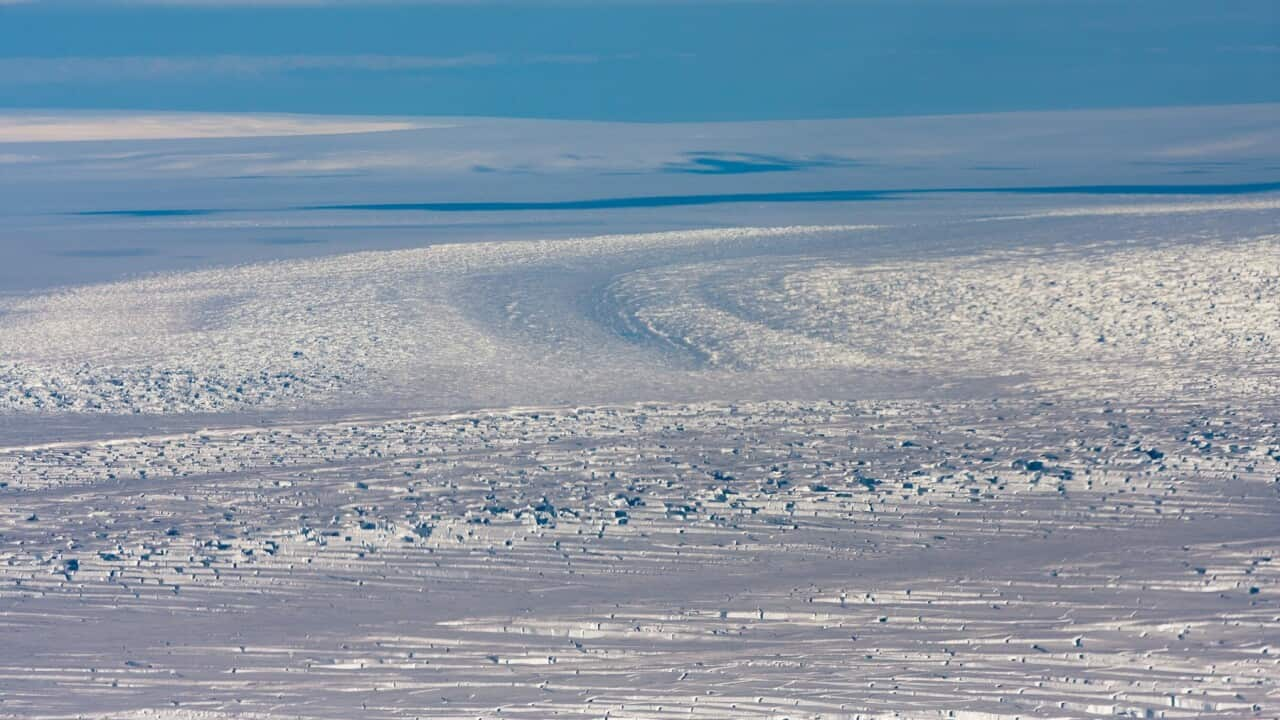The Denman Glacier in East Antarctica, one of the largest and fastest-melting glaciers on the continent, is presenting a critical challenge for climate scientists.
Despite its significance, little is known about the factors driving its rapid retreat.
Over the past three years, Australian scientists have embarked on a groundbreaking mission, collecting tonnes of rock and ice-core samples from this largely unexplored region.
Their research aims to shed light on the forces accelerating the glacier’s retreat and its implications for global sea levels.
What is the Denman Glacier?
The Denman Glacier is 5,000km south of Australia in a remote part of East Antarctica.
Research suggests the glacier has retreated over 5km in the past two decades, and beneath it lies what scientists have modelled as Earth’s deepest land canyon, stretching 3.5km below sea level.
Experts say that if the glacier were to melt entirely, it could raise global sea levels by 1.5 metres.
To better understand these dynamics, scientists have conducted intensive fieldwork, including drilling through five metres of thick ice to access the water below.
Geophysicist Coti Manassero and glaciologist Sarah Thompson are researching the area surrounding the glacier.
It proves how little we know about this region.
Geophysicist Coti Manassero
Using hundreds of metres of rope, their team has explored the icy depths, discovering an underwater canyon at least 1.2km deep.
Manassero said they made a surprising discovery during the expedition.
“We found some life down there — sponges, brittle stars. The marine ecologists are very excited because they didn’t expect to see anything. It proves how little we know about this region,” Manassero said.
The team also studied an epi-shelf lake, formed when freshwater from melting glaciers becomes trapped above denser, saltier ocean water.
They said these lakes provide a unique window into how changes in ocean temperature affect glacier melting.
Australia to analyse data
Led by the Australian Antarctic Division, instruments deployed in the lake measure water temperature, salinity, and depth, offering vital data on the interaction between the ice shelf and the ocean.
The mooring devices, left in place for two to three years, will transmit data back to Australia, helping scientists understand the long-term stability of the glacier.
Over three summers, the deep-field program has collected vast amounts of data and samples, now headed to labs across Australia for analysis.
Thompson emphasised the importance of this research.
“In East Antarctica, the main changes to the ice are happening at the interface between the ice shelf and the ocean. By studying this, we can better predict the impacts of these changes,” she said.
“Because it is such a big system and a complex system, we really don’t have a good handle on the kind of timescales over which that kind of change could happen. So it’s really important that we find out a lot more about the system to allow us to better predict the changes and the impacts of those changes that we might see.”
